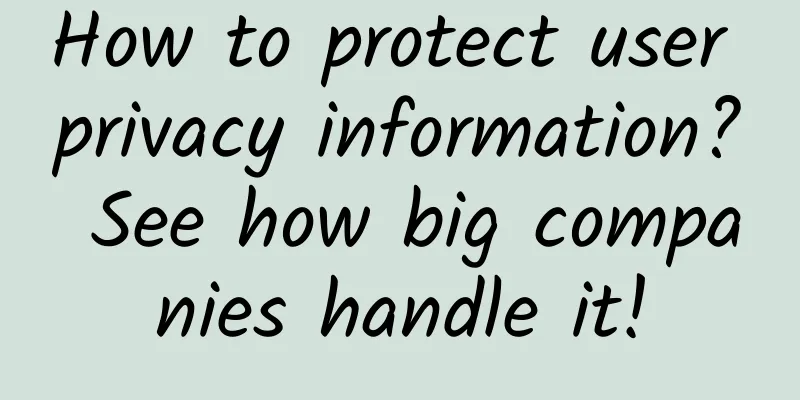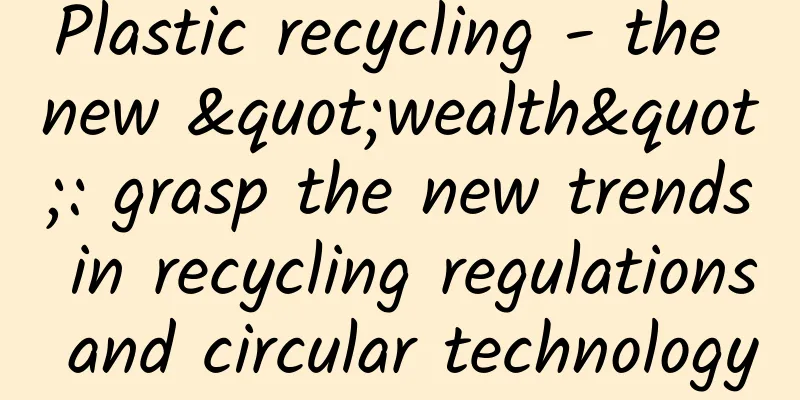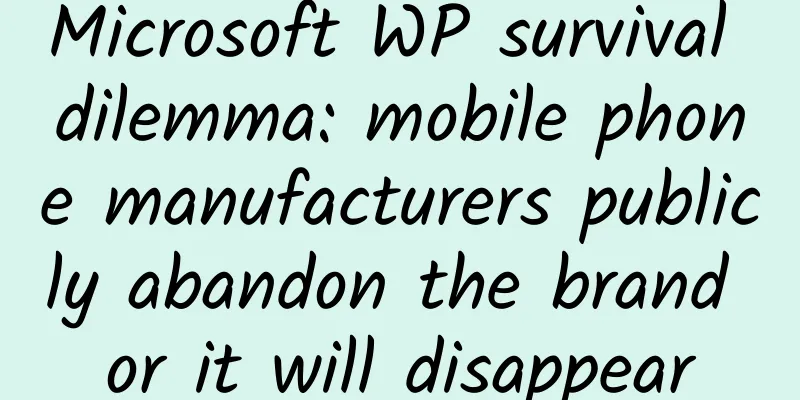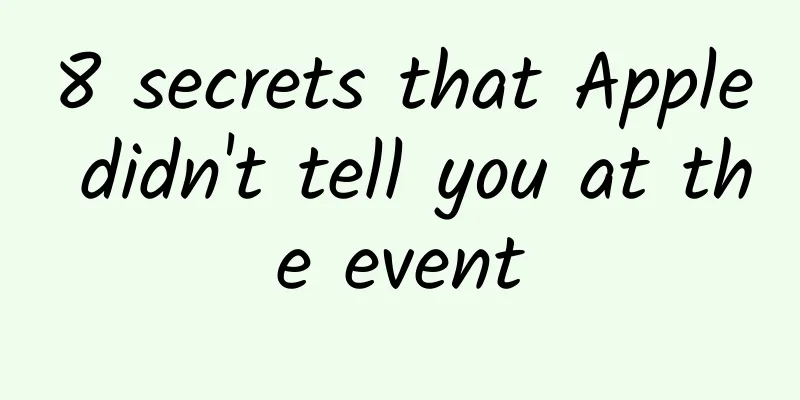How to protect user privacy information? See how big companies handle it!

|
Let’s summarize the practices and design points of major products in terms of “privacy protection”, so that there will be more entry points and reference objects when designing for user privacy information in the future. We use a variety of apps every day, including financial, social, and e-commerce apps, and these apps store your important private information, such as login passwords, amount values, identity information, and so on. We working people are sensitive to this private information, but we have no choice but to trust these apps. Therefore, today we will summarize the practices and design points of major products in terms of "privacy protection", so that we will have more entry points and reference objects when designing for user privacy information in the future. Password input protection Passwords are the keys to log into various apps, and they are also the basis for protecting our information data. In terms of protection in this regard, various apps have come up with various tricks, both in terms of design techniques and system functions. 1. After iOS screen recording and screenshot: hide password Thanks to iOS's consistent emphasis on user privacy, when filling in passwords on various APPs is monitored by screen recording and screenshot functions, Apple can also use its own technology to detect and keep it confidential. The saved images and videos will automatically hide any traces of password entry, including encryption symbols and characters entered on the keyboard. 2. Bilibili: Creating an “anti-peeping” perception When you enter your mobile phone number in the Bilibili app, the mascot above always keeps its eyes open, but when the cursor is positioned on the "password" or "verification code" input field, the mascot changes to "covering its eyes". This use of surrounding elements to create the perception that "no one will see your password" is also a common practice among many APPs. 3. Bank APP: Custom keyboard This is only available in specific types of products, such as banking, finance, and financial management apps. In order to protect the security of user information, these products will customize and develop a set of mobile phone keyboards to ensure that the characters entered by the user are displayed randomly and irregularly each time. Avoid others from remembering your click area and order, so as to obtain relevant information. But the corresponding implementation cost is not low~ Identity information shielding 1. Meituan: Automatically anonymous when giving negative reviews For example, Meituan and Ele.me will automatically check the anonymous review option when users give low-score reviews to prevent users from being maliciously harassed by merchants. However, this is only the apparent practice. I have always been xx about whether merchants are really unable to obtain user information. 2. Didi Hitch: Delayed release of negative reviews In addition to automatic anonymous evaluations, Dida Carpool will delay the publication of negative reviews to protect users from malicious harassment from drivers through the time difference. 3. WeChat: Create a new pseudonym When using WeChat to log in to other apps or websites, you can create an identity to log in. The new identity includes a new avatar and nickname, which can also be obtained randomly. Avoid synchronizing your main social information with other platforms, especially when using Tencent products and in scenarios where you “don’t want to be known by WeChat friends.” Protection of Amount Value 1. Wealth Management: Hidden Amount Text When hiding the amount of money, Licaitong does not show only the encryption symbol (******) as in the traditional way, but changes the encryption characters into the text: "empty". This concept of 'nothing' is more effective in terms of the perception of privacy protection than 'yes, but encrypted'. 2. Ping An One Wallet: Hide the amount when your hand covers the screen The amount of your personal assets will not be displayed directly in the personal assets area. When you cover the screen with your hand, the system will predict that you only want to be visible secretly, and automatically display the amount of your assets. This privacy design that uses screen perception is also a highlight. Screen Recording Processing In addition to the above-mentioned hidden passwords of iOS, other apps also have corresponding design points. 1. Bank APP: Pop-up warning For example, Bank of China or Industrial and Commercial Bank of China will force a pop-up window to remind users when they are asked to enter passwords through screen recording. This is a relatively compromise approach, and serves as a security reminder. However, after the reminder, the user can still enter characters while recording the screen. Even if the password is encrypted, the characters entered on the keyboard are still recorded one by one. 2. Maimai: Black screen processing Maimai directly turns the screen black to remind users to stop recording before they can enter the password normally, rather than asking users to enter the password in a dark environment. I heard that IKEA previously hid not only the characters of the password but also the number of digits of the password when facing screen recording. Screenshot processing This is also the most common scenario in daily life, which can save all sensitive information on the screen as images. Therefore, for products with high security requirements, users' screenshots will be processed and warned. 1. Alipay and WeChat Wallet: Risk Warning In Alipay and WeChat wallets, when taking a screenshot of the payment code, the user will be reminded of the risks of taking the screenshot. 2. Banking apps: screenshots prohibited Some banking apps are stricter in this regard and directly prohibit users from taking screenshots. 3. QQ: Hide your name with one click When taking QQ screenshots, you can block the user's QQ nickname with one click to avoid spreading your social information. Multi-window leakage processing When a phone opens multiple screen windows, the information leakage in the application is an easy-to-ignore place. Even if the content visibility in each application is not very strong, that small area still makes it easy for others to know what you are doing (especially when checking a certain aspect). For this aspect of design, the processing of some large-scale APPs provides us with some directions and references, such as: 1. Alipay: Blurred interface content Alipay and Ant Fortune blur the content on the screen when multiple windows are activated. 2. UC Browser: Black screen processing UC Browser will directly display a black screen and won’t let you see anything. 3. Tide: Retaining Users When the product has multiple windows, it prompts users not to close the app, which plays a certain role in product retention. Even when there is nothing in the product that can leak user privacy. Conclusion Well, the above are some of the major APPs’ protection scenarios and countermeasures for user privacy. I hope you can flexibly apply these techniques according to your actual situation. |
>>: In 2021, many websites will stop working on older versions of Android
Recommend
108 Internet Marketing Tools/Websites
Ever since the Wei Zexi incident broke out last y...
Huangshan Scenic Area does not encourage eating instant noodles? The truth is that there is indeed a "hard reason"!
Some time ago, the news that Huangshan Scenic Are...
Mutual Finance and Credit "High Cost-Effectiveness" User Growth Method (Routine)
The cost of acquiring customers in the Internet f...
Congratulations! Zhai Zhigang, Wang Yaping, and Ye Guangfu were awarded the Space Merit Medal
CPC Central Committee State Council Central Milit...
30 high-quality information flow cases from 18 industries, check them out all at once!
This article shares with you 30 high-quality case...
LeTV TV's ecological operation breaks the traditional price thinking
Yesterday, 60,000 LeTV TV Super TVs S40 Air and S...
It's scary to think about it! Water drips from trees on hot days. What is this unknown slime?
Every summer, especially in midsummer, you can he...
Tu Mi Character Design Issue 2 2021 [Good quality with courseware]
Tu Mi Character Design Issue 2 2021 [Good quality...
This hack can instantly increase your internet speed by 34%
When it comes to internet speed, we are never as p...
6 Misconceptions about Eating Whole Grains! The first one you may be doing
Every time I ask what I need to bring back home, ...
A glimpse into the current status of VR game development at home and abroad: Are we falling behind this time?
Last Friday, a developer forum themed on VR games...
2017 Global Innovation Report: Pan-AI fields gain strength, while genomics/VR cool down
Analyst: Wang Xin MIT list and comments compiled ...
Five-minute technical talk | A brief talk on micro front-ends
Part 01 What are micro frontends Micro frontends ...
Professional terminology for live streaming sales operations!
For those who are new to operations or have just ...
Mercedes-Benz to invest 40 billion euros in the next eight years to build eight battery cell factories to accelerate electrification transformation
At present, many countries and regions around the...









